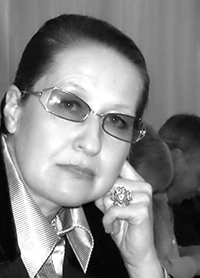EFFECTS OF SINGLE NORMOBARIC HYPOXIC EXPOSURE ON PHYSIOLOGICAL INDICATORS OF SWIMMERS
Ключевые слова:
hypoxia, swimmers, working capacity, aerobic performance.Аннотация
Objective of the study was to assess the effects of artificial normobaric hypoxia on the biochemical and physiological indicators of swimmers working in the aerobic power zone.
Methods and structure of the study. The study was carried out at the Research Institute of Sports and Sports Medicine of Russian State University of Physical Culture, Sports, Youth and Tourism. Sampled for the study were apparently healthy short- and middle-distance swimmers, who were split into the Experimental (EG) and Control (CG) Groups, 10 people each.
The athletes were asked to perform a step load test on the Monark Ergomedic 894E Peak Bike vertical cycle ergometer (Sweden). Their aerobic performance was evaluated in terms of volume, intensity and time of work using the hardware and software complex Ergomax (Russia) and specialized software (Patent No. 83004). The spirometric studies were conducted using the Cortex METALYZER 3B-R2 gas analyzer (Germany). The following gas exchange indicators were recorded: lung ventilation (LV), exhaled O2 and CO2 levels; O2 consumption (VO2). HR was measured using Polar T34 pulsometer (Finland). The blood lactate concentration (HLa, mmol/l) was measured by the electrochemical method using the NOVA Biomedical Lactate Plus (USA) analyzer. The capillary blood samples were taken in a quiescent state before the test and at the 3rd, 5th, 7th, and 10th minutes after the test. The pulse oximetry method (stationary - NONIN 8600, USA; carpal- MD300W, China) was used to record blood oxygenation (SO2). HR and blood oxygenation during the hypoxic tests were recorded in three stages: at rest – before the hypoxic exposure, for 1 min; during the 30-min exposure to the 9% O2 gas mixture; after the hypoxic exposure (recovery period) – under normal breathing conditions, for 3 minutes. Blood oxygenation and HR were recorded during the hypoxic test with a step of 10 seconds: before the hypoxic stimulus – at rest, for 1 minute; during the 30-min exposure to the 9% O2 gas mixture; after the hypoxic exposure (recovery period) – under normal breathing conditions, for 3 minutes.
Results and conclusion. The findings showed an ambiguous reaction of the biochemical and physiological characteristics of the swimmers’ body to the single hypoxic exposure when working in the aerobic mode. The efficiency of hypoxic exposure on the body and individual hypoxic tolerance rate, when coupled with load hypoxia, is largely determined by the rate of recovery of all the body functional systems involved.
Библиографические ссылки
Breslav I.S., Volkov N.I., Tambovtseva R.V. Dykhanie i myshechnaya aktivnost cheloveka v sporte [Breathing and muscular activity in sport]. Moscow: Sovetskiy sport publ., 2013, 334 p.
Burykh E.A. Obshchie zakonomernosti i individualnye osobennosti integrativnogo otveta organizma cheloveka na vozdeystvie ostroy normobaricheskoy gipoksii [General patterns and individual characteristics of integrative response of human body to effects of acute normobaric hypoxia]. Doct. Diss. Abstract: 03.03.01 Sechenov Institute of Evolutionary Physiology and Biochemistry, Russian Academy of Sciences. St. Petersburg, 2020. 40 p.
Iordanskaya F.A. Gipoksiya v trenirovke sportsmenov i faktory, povyshayushchie ee effektivnost [Hypoxia in athletic training and performance enhancing factors]. Moscow: Sovetskiy sport publ., 2015. 160 p.
Kolchinskaya A.Z. Intervalnaya gipoksicheskaya trenirovka v sporte [Interval hypoxic training in sports]. Moscow: Sportivnaya meditsina publ., 2008. No. 1. pp. 9-25.
Kolchinskaya A.Z. Kislorod, fizicheskoe sostoyanie rabotosposobnost [Oxygen, physical condition, performance]. Kiev: Nauka dumka publ., 1991. 208 p.
Samoylov V.O., Maksimov A.L., Filippova E.B. et al. Vliyanie intervalnykh gipoksicheskikh trenirovok na funktsionalnoe sostoyanie cheloveka v usloviyakh gipoksicheskoy gipoksii [Effect of interval hypoxic training on human functional state under hypoxic hypoxia]. Vestnik Rossiyskoy voenno-meditsinskoy akademii. 2014. No. 4 (48). pp. 158-163.
Smetanin V.Y. Vozdeystvie razlichnykh rezhimov intervalnoy gipoksicheskoy trenirovki na kardiorespiratornye i gematologicheskie funktsii [Impact of different modes of interval hypoxic training on cardiorespiratory and hematological functions]. Fiziologiya cheloveka [Human physiology]. 2000. V. 26. No. 4. pp. 73-82.
Tambovtseva R.V., Volkov N.I., Nikulina I.A. «Gipoksiya nagruzki» v usloviyakh napryazhennoy myshechnoy deyatelnosti [Load hypoxia in conditions of strenuous muscular activity]. Proc. International research-practical. conferences. Minsk: BPUFK publ., 2014. pp. 82-84.
Hollis, B.A., Influence of intermittent hypoxic training on muscle energetic and exercise tolerance / J. Fulford, A. Vanhatalo, C.R. Pedlar, A.M. Jones // J. Appl Physiol. 2013. V. 114. Р. 611–619.

Опубликован
Версии
- 2022-03-07 (3)
- 2022-02-01 (2)
- 2022-01-01 (1)
Как цитировать
Выпуск
Раздел
Лицензия

Это произведение доступно по лицензии Creative Commons «Attribution» («Атрибуция») 4.0 Всемирная.
